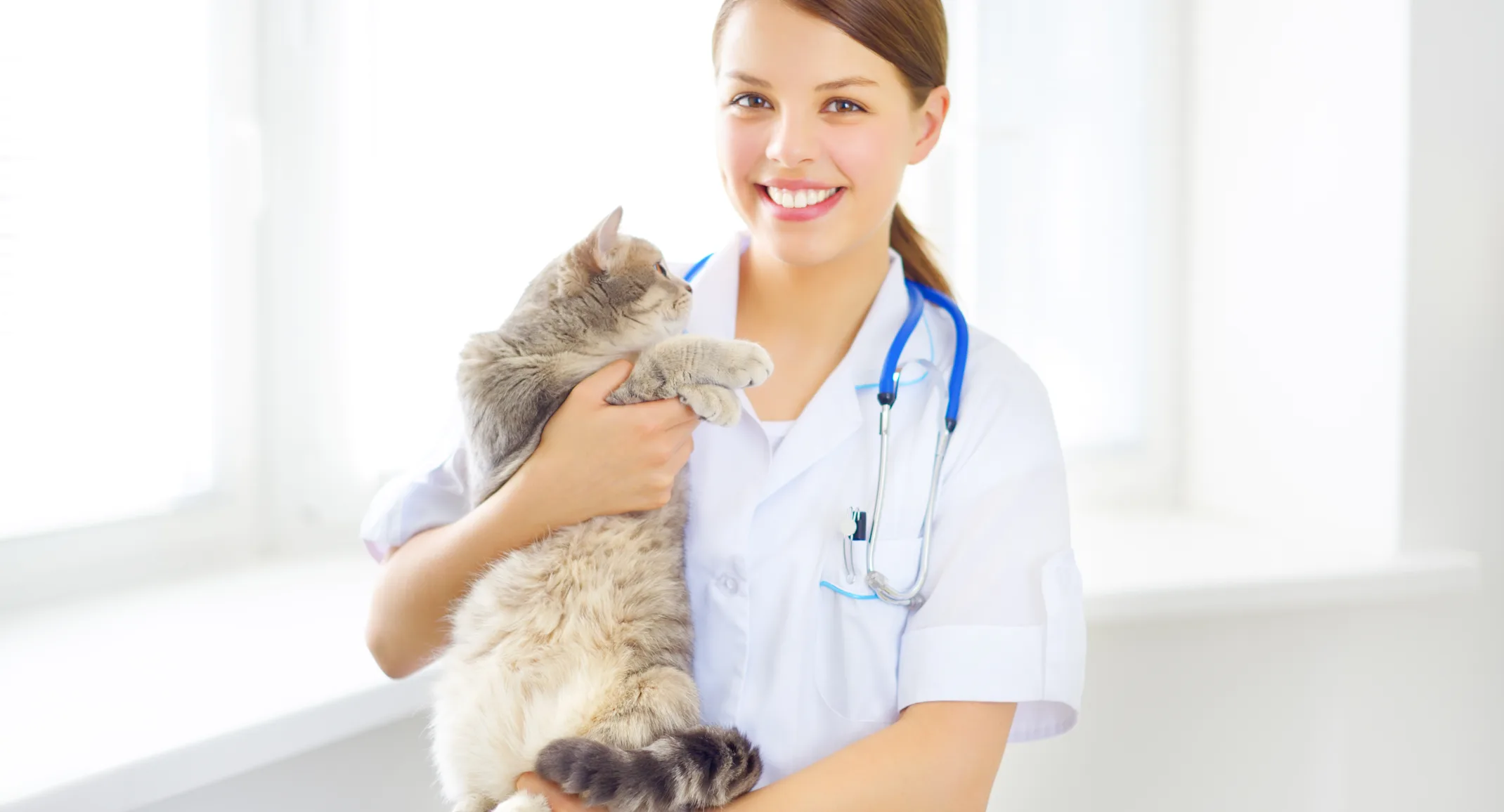Taking the Fear Out of Veterinary Visits
General

We know that visiting the veterinarian is probably not at the top of your pet’s list of favorite things, but we also don’t want it to be an experience she dreads. In fact, our team has gone through specialized training to become Fear Free®-certified. Why is fear bad for your pet?
Some negative effects of fear are obvious. Your cat’s dilated pupils, crouched stance, and bared teeth are a good indication she is not enjoying whatever situation has evoked her inner lioness. Her temperament, as well as that of every other animal and the humans around her, can be affected for hours. In a veterinary setting, if your pet is upset, her visit lasts longer, prolonging the seemingly unpleasant situation. Your pet will form a negative association with stressful veterinary visits, and you will be less likely to bring her to the hospital when she needs important medical care.
Many detrimental effects of stress aren’t obvious. Stress activates your pet’s sympathetic nervous system, also called the fight-or-flight system, and causes cortisol release. Sympathetic stimulation causes increased heart rate, workload, and blood pressure, as well as pupillary dilation and decreased gastrointestinal motility.
Why is low-stress handling better for your pet?
Taking the time and effort to make your pet’s veterinary visit pleasant—and maybe even fun—pays off for everyone involved.
Your pet learns that our veterinary hospital is not a scary place with dangerous people trying to hurt her. As she becomes more comfortable with each visit, she will form positive associations with our team members who are working to ensure her health.
You won’t dread bringing your pet to the veterinarian for wellness visits, vaccines, and preventive treatments. Most importantly, you will be more likely to bring her to our hospital when she is sick and needs medical testing and treatment.
Our team members take pride in ensuring a happy visit for your pet. Seeing an anxious pet relax and learn to love coming to our veterinary hospital makes our day.
What does Fear Free® certification mean for your pet?
Fear Free is an initiative that aims to decrease stress and anxiety in pets during veterinary visits. We have seen the clear benefits of the Fear Free techniques for our patients and we chose to become certified because every pet’s comfort is our priority. Here is how a Fear Free visit may differ from a typical veterinary visit:
Our approach - Our team members will approach your pet calmly and slowly to avoid overwhelming her, and the visit will progress as slowly as necessary to keep her calm.
Your pet’s comfort - We will examine your pet wherever she feels most comfortable—on the exam table, on the floor, or in your lap.
Positivity - We will use positive rewards, such as high-value treats and praise, throughout your pet’s visit. Feel free to bring a favorite treat or toy that your pet cannot resist. If your pet has an allergy or food sensitivity, let us know so we can modify our rewards for her accordingly.
Calming pheromones - We may use pheromones, such as Adaptil/DAP® and Feliway® products, that encourage your pet to feel calm and relaxed during her visit.
Minimal restraint - We will restrain your pet as little as possible during her physical exam. Even blood draws can often be performed without holding your pet down.
How can you help make your pet’s visit stress-free?
A low-stress experience actually begins at home before your pet’s visit. Follow these tips to start your pet’s next veterinary visit off on the right paw:
Enjoy the ride - Many animals become anxious during car rides, so your best efforts toward a low-stress veterinary visit may be negated if your pet arrives distressed from the ride. Condition your pet to enjoy car rides by taking her on short rides to places she loves and rewarding her with treats and praise.
Be happy - Stop in at our hospital for a happy visit so we can lavish attention and treats on your pet without any poking and prodding. Social visits help your pet form a positive association with our hospital and team members.
Take comfort in the carrier - Many cats are wrangled into their carriers only for their yearly visit to the veterinarian, so they form a negative association with the carrier. Place your cat’s carrier in your home, with the door open and blankets and treats inside, for several days before you transport her to our hospital. Encourage her to become comfortable going in and out of the carrier, and reward her with treats and praise.
Spray away - Use Adaptil/ DAP® spray for dogs and Feliway® spray for dogs and spray for cats on blankets, carriers, car seats, and other items your pet will contact during her ride to decrease anxiety and promote calming.
If you have questions about how to make your pet’s veterinary visit as stress-free as possible, contact us.
